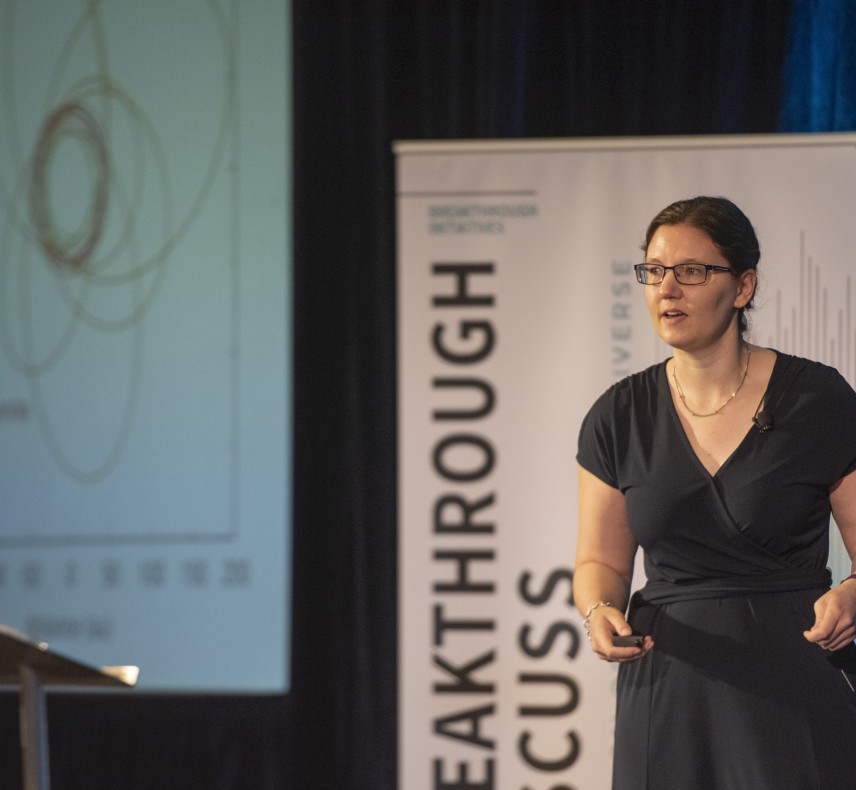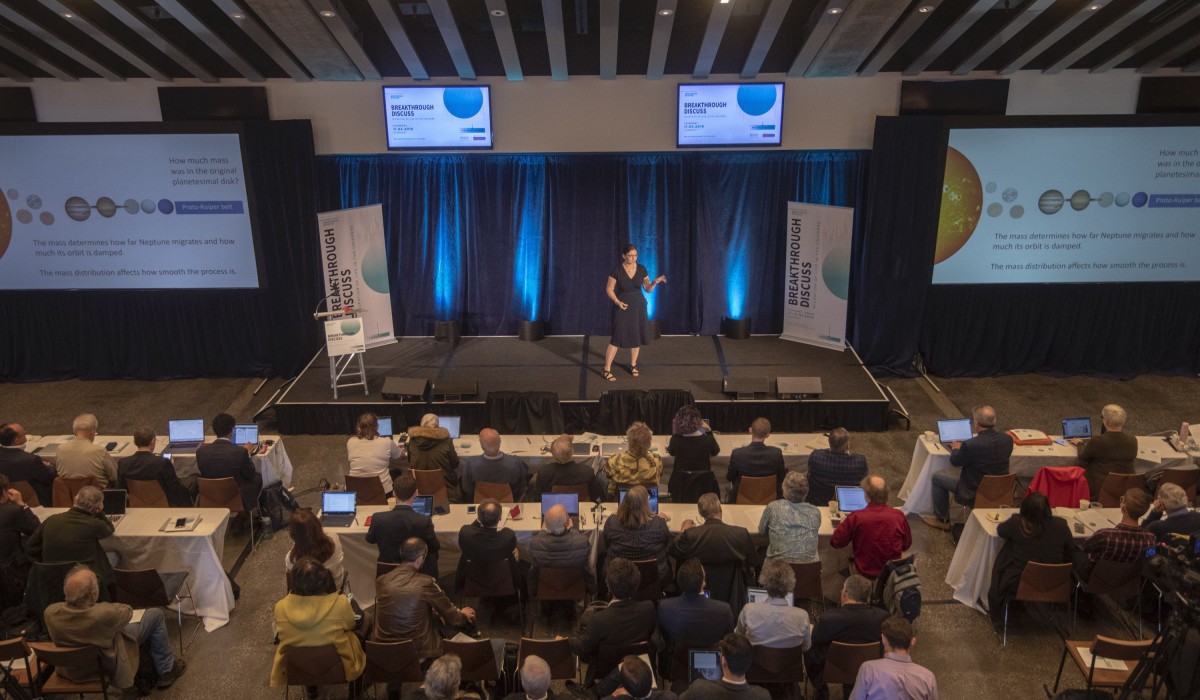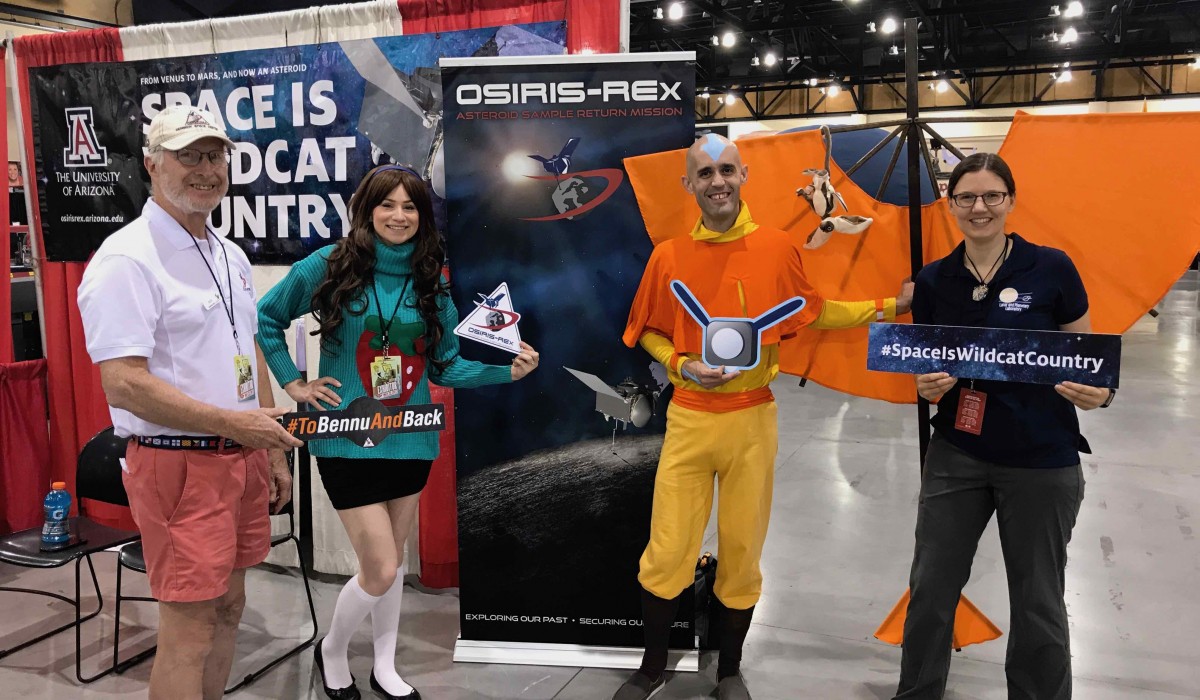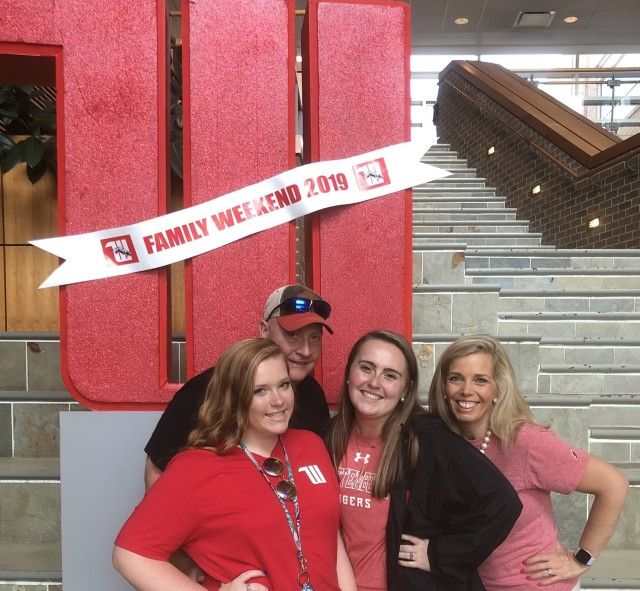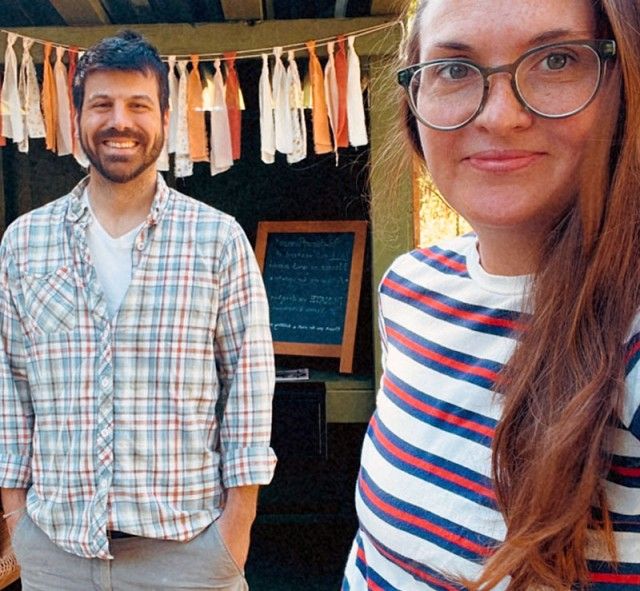Wittenberg graduate Kathryn Volk is boldly going where few others have gone before – to the Kuiper Belt along the far edges of the solar system in hopes of proving the existence of a few more planets.
Volk, who graduated from Wittenberg in 2006 with degrees in physics and Russian area studies and a minor in mathematics, earned her Ph.D. in planetary sciences from the University of Arizona in 2013 where she is currently an associate staff scientist at the University’s Lunar and Planetary Laboratory.
In a 2017 research study published in the Astronomical Journal, Renu Malhotra and Volk, a post-doctoral researcher with Malhotra at the time, presented evidence for a mysterious mass that appears to be controlling the orbital planes of objects in the Kuiper Belt. The Los Angeles Times, Newsweek, and New Scientist magazine were among the national news publications that covered their research. Volk will now return to Wittenberg for the next Wittenberg Series event, the IBM Endowed Lecture in the Sciences, featuring Malhotra as the keynote speaker at 7:30 p.m. Thursday, Sept. 26, in Bayley Auditorium of the Barbara Deer Kuss Science Center.
An award-winning scientist and national speaker, Malhotra is the Louise Foucar Marshall Science Research Professor and Regents’ Professor of Planetary Sciences at the University of Arizona. She has gained national attention for her research on the outer edges of the solar system, particularly her work that suggests the existence of a new planet.
“I've worked on a wide variety of projects as a postdoc and now as a staff scientist at the University of Arizona, but it is always fun to explore the possibility of unseen planets in the solar system,” said Volk, who is originally from Toledo, Ohio, but has made Tucson, Arizona her home. “I started working with Renu when I began grad school in 2006. I met her when I was a visiting prospective student, and I found her research very interesting. The paper about a potential planet at the edge of our solar system came about as Renu and I were trying to assess the observational evidence for another even more distant proposed unseen planet.”
During her time at Wittenberg, Volk was active in the Astronomy Club and the Society of Physics Students, and had the opportunity to travel to Russia twice with the Russian area studies program during her final year. Outside of college, she was an active equestrian, competing nationally in show jumping competitions during her first few years at Wittenberg.
Volk’s current research projects include using observations and theoretical studies of the Kuiper Belt (and related small body populations) to understand the dynamical history of the outer solar system and exploring the orbital dynamics of the diverse planetary system architectures discovered by the Kepler mission and other exoplanet searches. She is a member of the Outer Solar System Origins Survey (OSSOS) collaboration and the LSST Solar System Science Collaboration. She recently took time out of her busy schedule to reflect on some of the chapters in her life:
Wittenberg: Tell me about your current position at the University of Arizona and how this came about. Is this the career path you thought you’d be on following college?
Volk: I am currently an associate staff scientist at the University of Arizona's Lunar and Planetary Laboratory. My job is what we call a "soft money" research position in that I am funded solely through external grants. I knew when I left Wittenberg that I wanted to work at a university, although I didn’t plan to stay in a soft money research position. But, my current position is nice because it means I get to work on problems in planetary science that I find interesting (as long as I can convince NASA or the NSF that they are worth funding!), and I love living in Tucson. I also get to work with a wide network of scientific collaborators at institutions around the world.
Wittenberg: Tell me about your postdoctoral research at the University of Arizona’s Lunar and Planetary Laboratory and how you feel there is evidence for a planet at the far edge of our solar system.
Volk: Our solar system has a large population of small icy bodies that orbit out past Neptune called the Kuiper Belt. This population of objects is astonishingly diverse in terms of the physical properties of the bodies and the shapes of their orbits around the sun. A lot of the diversity we see is probably a result of how the solar system's giant planets (Jupiter, Saturn, Uranus, and Neptune) formed and moved around before they arrived at their current orbits. The gravitational interactions with these planets early in the solar system shaped the Kuiper Belt we see today. But there are also things in the current Kuiper Belt that are difficult to explain via interactions with the known planets. These include the apparent alignment of the orbits of some of the most distant Kuiper Belt objects that have been used to argue for an as yet unseen 10 Earth mass planet in the very distant solar system.
We were investigating the evidence for this planet when we decided to take a close look at the arrangement of the orbital planes (i.e., how the paths these objects take around the sun are tilted/inclined relative to the known planets) in the Kuiper Belt as another line of evidence for unseen planets. What we found is that the average orbital plane of the Kuiper Belt does not appear to behave the way we would expect it to if there were no additional large planets beyond Neptune. The average plane we found could be explained if there was a Mars-to-Earth mass planet something like twice as far from the sun as Neptune. But whether this planet (or the larger proposed one) really exist can only be confirmed through more observational work. The Kuiper Belt is very distant, so the objects in it are very faint and difficult to observe.
Ongoing and future surveys will discover more of these objects so these apparent anomalies in their orbital distribution can be re-checked. There are also observational surveys that will continue to improve our inventory of objects in the outer solar system, including these proposed larger planets. Our current inventory is extremely incomplete, so even if these exact proposed planets are not found, I would be surprised if we didn't find something new and large out there.
Wittenberg: Do you believe that there are many more planets out there and do you believe in the existence of other civilizations/aliens?
Volk: Whether there are many more planets out there is no longer in the realm of beliefs, but the realm of observational fact. There are over 4,000 confirmed planets orbiting other stars and thousands of candidate planets awaiting confirmation, and that's just what we have been able to observe so far. We can now confirm through observations that most stars have planets, stars with multiple planets are common, and there are far more kinds of planetary systems out there than we thought back when we only had our own solar system as an example. There are in the order of 100 billion stars just in our own galaxy, and in the order of 100 billion galaxies in the universe. Given that most stars have planets, it seems incredibly unlikely that our planet is the only one on which life arose.
Wittenberg: When did you first become fascinated with star gazing and decide this was the field/career for you?
Volk: I have always been interested in astronomy, so I don't even remember a ‘first’ time I was intrigued by it. One of my uncles had a telescope and did astrophotography as a hobby, and I always thought that was so cool. I didn't decide to go into planetary science as a career until between my junior and senior years at Wittenberg. I hadn't even realized planetary science was a separate field of study until then. But it was a perfect fit because it’s very interdisciplinary. I also find planetary science to be a little more tangible than astronomy because we are often working on scientific questions in the solar system, although I study planets around other stars too, which is a bit closer to home than distant galaxies or cosmology.
Wittenberg: What are your career goals? How did Wittenberg lead you down your career path?
Volk: My goal is to keep working on interesting questions in planetary science. My education at Wittenberg was a really good foundation for my career in science. I think one of the really valuable things about a liberal arts education is that it gives you an appreciation for the wide variety of academic fields. Planetary science is a really interdisciplinary field of study that combines aspects of physics, geology, chemistry, and astronomy, so it's a natural extension of the liberal arts approach.
Beyond the general benefits of a liberal arts education, the faculty at Wittenberg had a huge impact on my development as a student and a scientist. The small group and one-on-one interactions Wittenberg students have with the faculty in all classes, not just classes in your major, are so important, and it's something that I don't think students experience at larger schools. I learned so much from discussions with Wittenberg faculty, especially the physics and Russian area studies faculty. In terms of helping steer me to my current career, Dr. Dan Fleisch was a huge influence as he mentored me through my classes and senior research project.
Wittenberg: Can you recall a story or moment growing up that helped shape your current interests?
Volk: A big planetary science-related event that I remember being fascinated by when I was young was in 1994 when the fragments of comet Shoemaker-Levy 9 were observed hitting Jupiter. I followed the news stories about that and even remember drawing a picture of it. I don't know that this event really did anything to shape my current career, but I am part of the science team for a proposed space mission to go orbit a comet that is in the region of the solar system that is likely the immediate source region for comets, including comets that impact Jupiter. My website is katvolk.com for anyone who wants to check out my latest research.


